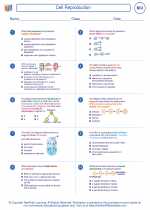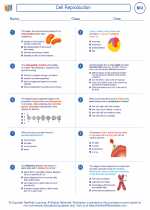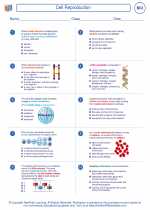Cellular Respiration
Cellular respiration is the process by which cells break down glucose and other organic molecules to produce energy in the form of ATP (adenosine triphosphate).
Overview of Cellular Respiration
Cellular respiration consists of three main stages: glycolysis, the citric acid cycle (Krebs cycle), and oxidative phosphorylation (electron transport chain and chemiosmosis).
Glycolysis
Glycolysis takes place in the cytoplasm and involves the breakdown of glucose into two molecules of pyruvate. This process generates a small amount of ATP and NADH.
Citric Acid Cycle (Krebs Cycle)
The citric acid cycle occurs in the mitochondria and completes the breakdown of glucose by oxidizing pyruvate to carbon dioxide. It also produces NADH and FADH2, which carry high-energy electrons to the next stage of respiration.
Oxidative Phosphorylation
Oxidative phosphorylation takes place in the inner mitochondrial membrane and involves the transfer of electrons from NADH and FADH2 to oxygen through a series of protein complexes in the electron transport chain. This process generates a large amount of ATP through chemiosmosis.
Study Guide
- What is the main purpose of cellular respiration?
- Describe the three main stages of cellular respiration.
- Where does glycolysis take place in the cell?
- What are the products of the citric acid cycle?
- Which stage of cellular respiration generates the most ATP?
- Explain the role of NADH and FADH2 in cellular respiration.
By understanding the process of cellular respiration and its key stages, you will be able to grasp how organisms convert energy from organic molecules into ATP, which is essential for all cellular activities.
.◂Biology Worksheets and Study Guides High School. Cell Reproduction

 Worksheet/Answer key
Worksheet/Answer key
 Worksheet/Answer key
Worksheet/Answer key
 Worksheet/Answer key
Worksheet/Answer key
